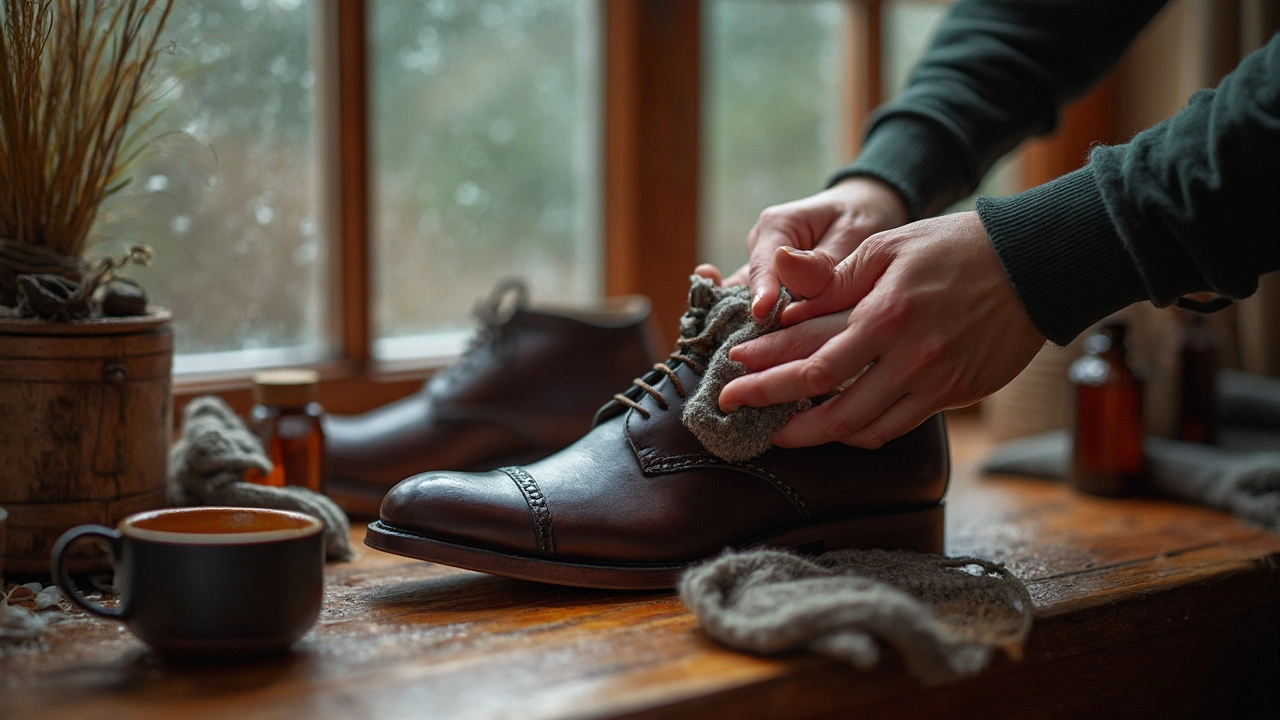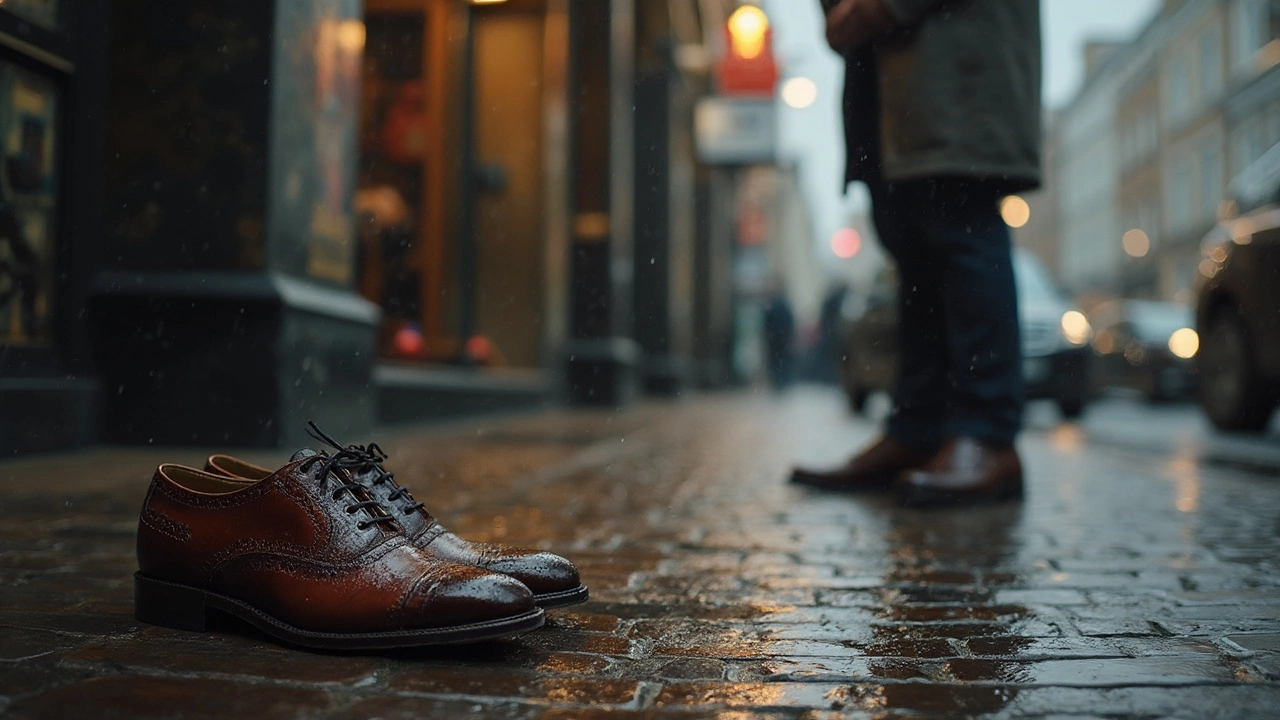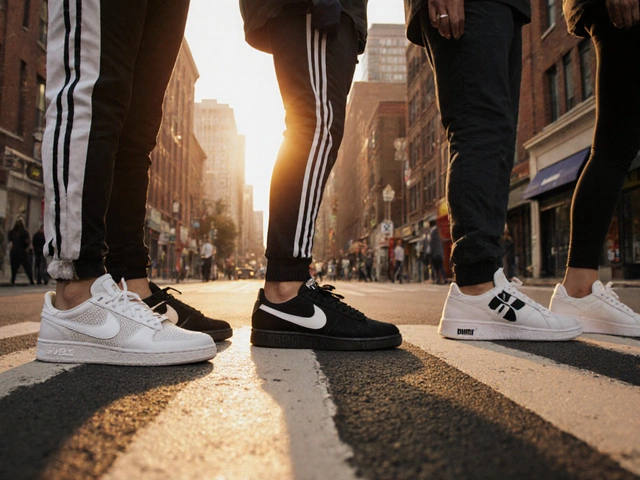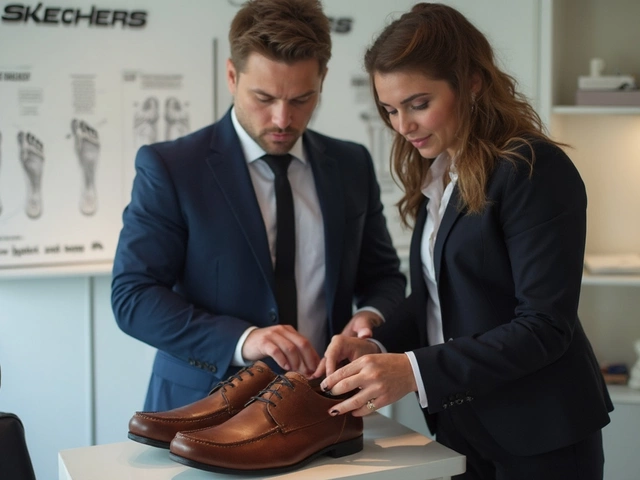Ever had your leather shoes soaked in a surprise downpour, only to pull them on the next day and feel like your feet just went up a size? That weird tight squeeze isn’t just in your head. When leather gets wet, all sorts of things start happening at the microscopic level. A lot of people are surprised to learn that leather acts a bit like our skin—so it can stretch, shrink, or go stiff, depending on how you treat it while it’s drying.
The real problem? Wet leather can dry out in an odd shape, sometimes ending up tighter or even warped around your foot. That’s why you hear so many horror stories about expensive shoes coming out of a rainstorm suddenly feeling like torture devices. The good news: you can do plenty to dodge that fate, and there are a few hacks that can bring shrunken shoes back to life before you even think about giving them away.
- What Happens to Leather When It Gets Wet?
- Does Wet Leather Shrink or Tighten?
- Why Wet Leather Shoes Feel Uncomfortable
- How to Prevent and Fix Tightness in Leather Shoes
What Happens to Leather When It Gets Wet?
The moment water hits your leather shoes, it starts breaking down the natural oils and fats in the material. Leather is basically animal hide, and those oils keep it flexible and comfy. Once water seeps in, it washes some of those natural oils away. This is where things start to get tricky.
When leather gets drenched, its fibers swell up as they soak in the moisture. While it’s still wet, the leather feels softer and a bit more forgiving. But as it dries, the story flips. With less oil to keep everything supple, the fibers tighten up and the leather can become stiffer or even shrink. That’s when you notice your leather shoes aren’t fitting quite like they used to.
What a lot of folks don’t realize is that it doesn’t even take a lot of water—sometimes even walking through damp grass or light rain is enough to mess things up over time. If leather dries quickly, especially with heat, the shrinking and hardening gets even worse. Think of leather a bit like a sponge: it expands with water but dries out smaller and tougher than before.
- Wet leather loses natural oils and grease.
- Fibers swell, then contract as it dries out.
- Heat speeds up the stiffening and shrinkage process.
- Dampness can slowly change shape and comfort with repeated exposure.
Manufacturers suggest letting wet leather shoes dry slowly at room temp, not near a heater or in direct sun, if you want to keep them from warping. And if you’ve got shoe trees handy, now’s the time to use them—they keep the shape better and help the leather dry in the right form.
Does Wet Leather Shrink or Tighten?
Here’s the deal: when leather shoes get wet, the leather fibers absorb the moisture and swell up. This makes the material softer—at first. But once those wet shoes start to dry, things change. As the water evaporates, the fibers pull closer together, which can make the leather shrink and feel tighter around your foot.
Most folks think leather stretches out and stays loose after getting wet, but the opposite is often true. This “tightening” happens because the network of fibers inside leather loses some of its structure during the wetting, and as it dries, those fibers bond closer, taking up less space. It’s kinda like jeans getting tighter after a wash, but for your feet. If leather dries fast or with heat, the shrinkage gets worse. High heat can shrink leather by as much as 10%, making your once-comfy shoes suddenly pinch and press in all the wrong spots.
To see how dramatic this can be, here’s a quick look at what happens to leather if it dries improperly:
| Condition | Shrinkage Risk | Comfort After Drying |
|---|---|---|
| Air dry (room temp) | Low to Medium | Stays somewhat comfy |
| Heat source (radiator, dryer) | High | Much tighter, may even deform |
| Direct sunlight | Medium | Tighter, risk of cracking |
If your leather shoes get soaked, how much they tighten depends on the quality and thickness of the leather, the type of drying, and whether you’re conditioning them after. Untreated, full-grain leather is more sensitive to shrinking than synthetic versions or those with lots of protective coatings.
Bottom line: yes, wet leather usually gets tighter, not looser. Just by the way the fibers re-bond when moisture vanishes, your shoes can go from roomy to tight if you’re not careful with the drying process.

Why Wet Leather Shoes Feel Uncomfortable
Pulling on a pair of leather shoes after they've gotten wet can be rough. One of the biggest reasons is that wet leather actually loses some of its natural oils, which normally keep it flexible and comfy. When those oils wash out and don't get replaced, the shoe stiffens up, and you end up fighting with a tight, hard shell instead of a soft, glove-like fit.
Another thing: leather expands slightly when wet but then shrinks as it dries, especially if you let it dry too fast (like putting shoes next to a heater). This shrinking, combined with a loss of flexibility, is what makes your favorite leather shoes suddenly squeeze your toes.
Here’s a basic breakdown of what’s going on inside your kicks:
- Water soaks into the leather fibers, causing them to swell.
- As the leather dries, the fibers contract—sometimes more than before—and lock into a tighter shape.
- Lack of moisture also pulls out oils, leading to roughness and a stiff feel.
Wearing damp shoes can make things worse: as your feet sweat, the inside of the shoe stays moist longer. This basically traps your skin against tightening leather, rubbing and causing blisters. Plus, bacteria love that wet, warm environment, which means you could be looking at a not-so-fun smell situation down the line.
According to a 2022 shoe repair shop survey, the number one complaint after rain damage was uncomfortable tightness and inflexibility in expensive leather shoes. Below is a quick comparison:
| Condition | Feel After Drying |
|---|---|
| Properly dried, conditioned leather | Soft, slightly stretched, comfortable hold |
| Air-dried too quickly, no conditioning | Tight, stiff, uncomfortable squeeze |
If you want to keep your leather shoes pain-free after getting wet, keeping them well-conditioned and letting them dry slowly is key. Otherwise, you risk ending up with shoes that feel a size too small overnight.
How to Prevent and Fix Tightness in Leather Shoes
If your leather shoes have ever shrunk up after getting wet, you know it’s no joke. There are a few things you can do to make sure you don’t have to wrestle your feet into your favorite pair next time.
Preventing Tightness starts before your shoes even get wet. The key is to keep them treated and to dry them out the right way if they do get drenched. Here’s what works:
- Use a good leather conditioner a few times a year. Conditioned leather is more resistant to drying, cracking, and shrinking if it gets wet.
- Apply a water-repellent spray before wearing them out in rainy weather. This adds a barrier that helps keep water from soaking into the fibers.
- If your shoes get wet, take action fast. Blot them with a towel—never use a hair dryer or set them close to a heater. Fast heat dries them too quickly and can make them shrink up.
- Stuff your shoes with newspaper or clean, dry socks while they dry. This holds their shape and helps them dry out evenly.
- A shoe tree can work wonders. The wooden ones especially pull out moisture and keep the shape on point.
But maybe you’re already dealing with shoes that got tight. Don’t panic—here’s how to get some room back in your leather shoes:
- Wear thick socks, slip on the shoes, and heat them gently with a hairdryer for a minute or two while flexing your feet. Walk around until they cool off—just don’t overdo the heat.
- Use a proper shoe stretcher. They’re made for this exact problem and can add just enough width or length. Let it sit overnight for the best results.
- Try the freezer trick: put a sealed bag of water in each shoe, then place them in the freezer. Water expands as it turns to ice, stretching the shoe gently. Pull them out before the leather feels rock hard and let them thaw naturally.
- If none of these work, most cobblers can stretch leather shoes a bit for you. It’s usually pretty cheap and you don’t have to risk damaging the shoes yourself.
According to a 2023 poll from a shoe care brand, about 40% of people with leather shoes admit they’ve tried DIY stretching at home. That just shows you’re not alone if you’re wrestling with this stuff.
Keep in mind, though, if your shoes have been super soaked or dried harshly several times, the leather can break down for good. Fixing tightness works best early on—so act as soon as you feel it getting snug.





